Heading out the door? Read this article on the new Outside+ app available now on iOS devices for members! Download the app.
Spend some time perusing Instagram fitness accounts and you’ll soon realize that resistance bands are having a moment. Long recommended by physical therapists for injury prevention and rehabilitation exercises, resistance bands are now widely being used in daily workouts by professional athletes and gym novices alike because they’re a great alternative to working out with traditional free weights. And according to Mikaela Shiffrin, they can be more fun.
Benefits of Resistance Bands
Resistance bands are some of the cheapest, most convenient, and very portable fitness tools out there. You don’t need access to a gym or even much space to be able to complete a full-body strength session. Heading on a business trip or vacation but want to be able to sneak in a few quick workouts? Throw a few resistance bands in your suitcase and bust some moves in the hotel room.
Besides portability, resistance bands are much easier on the joints and muscles than traditional free weights, so band exercises offer a great strength training modification for people dealing with past injures or joint problems.
Resistance Bands vs. Free Weights
But the biggest benefit to exercising with resistance bands is that they challenge the body and muscles in different ways than traditional weights because the resistance we’re required to work against changes, prompting our body to adapt
Traditional weights, like dumbbells or kettlebells, force muscles to work against resistance too, but only against gravity. When working against the force of resistance bands, you’re not working against gravity—you’re working against the elastic force of the resistance band. That means that while the resistance of a free weight remains the same throughout an exercise—you can do a bicep curl with a 10-pound weight and the force you’ll be required to generate to curl those 10 pounds doesn’t change throughout the movement—the resistance we have to work against with a band gradually increases the more the band becomes stretched out, requiring your muscles to work harder throughout the movement.
The drawback to that is that it’s hard to keep track of how hard you’re working throughout any given resistance band exercise, while it’s easy to keep track of how many sets you do with a 10-pound weight. But the benefit is that you’re working smaller stabilizer muscles and ligaments that don’t necessarily get worked with free weights, meaning you’re toning muscles rather than building bulk muscles (if your only mission is to build serious muscle, resistance bands—and this article—are not for you; resistance bands will not build the kind of bulk you might be looking for).
Additionally, some resistance band exercises work those stabilizer muscles important to skiing by challenging your balance as you act against force. Just watch Lindsey Vonn work her entire body with this one exercise.
Types of Resistance Bands
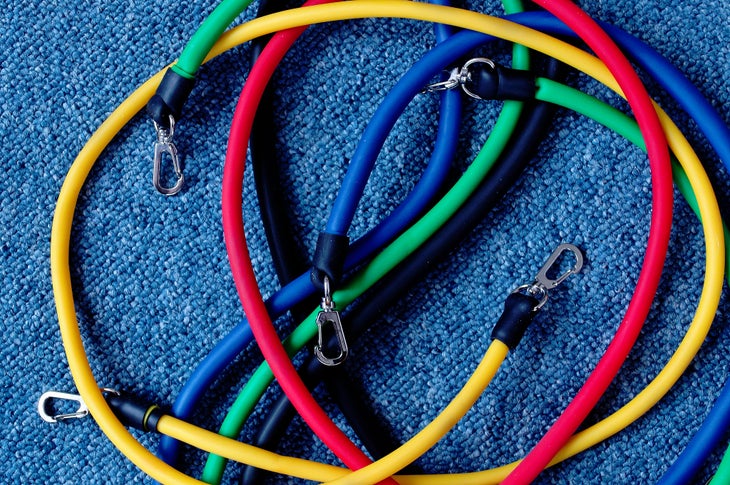
- Tube bands with handles: longer tubes with two plastic handles on either side, great for upper body strength exercises thanks to their handles
- Loop resistance bands: flat bands that form a short, continuous loop; best for lower body (legs, glutes, hips) exercises
- Pull-up bands: longer, thicker bands that form a big continuous loop; used primarily as a pull-up assist on a pull-up bar
These resistance bands all come in sets of varying colors which indicate the elasticity (or thickness) of the band. Most brands of resistance bands follow the same color code:
- Yellow: Very stretchy, light resistance
- Red: Medium resistance
- Green: Medium to heavy resistance
- Blue: Heavy resistance
- Black: Thickest bands, heaviest resistance
Hey Alexa: Shop Resistance Bands on Amazon
Stay on Topic: Preseason Fitness Gear for Skiers
Great Resistance Band Exercises for Skiers
For skiers, the biggest reason to add resistance bands to your workout is to help build and strengthen smaller muscles and ligaments around joints critical for skiing: the hip complex, knees, and ankles.
Many injuries sustained during skiing affect these joints, so using resistance bands to help build up the muscles around these joints is key in preventing injuries on the hill. The following exercises will also help increase mobility in these key joints so you’re skiing as efficiently as possible.
Clam Shells
- Targets: Hip complex—adductors, glutes
- Benefit for skiing: Strengthens hip muscles to help sustain basic athletic stance (BASE) while skiing
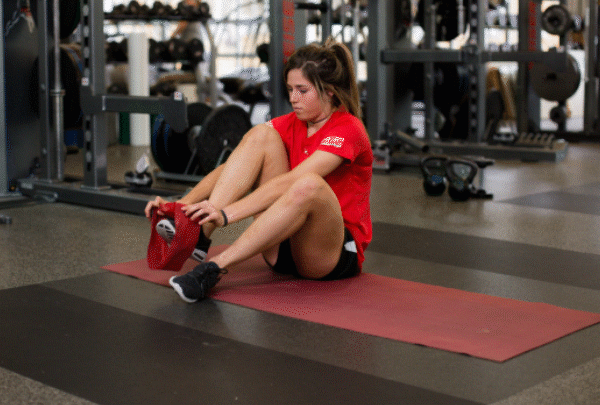
Directions: Lying on your side, place the band around both legs just below the knee. With your knees and hips at 90 degrees, keep one knee in contact with the floor and raise the other up and out against the band. Hold at the top and repeat.
Banded Lateral Walks (a.k.a Monster Walk)
- Targets: Hip complex—adductors, glutes, quads
- Benefit for skiing: Continuous contraction of glutes and adductors mimics contraction of muscles during skiing
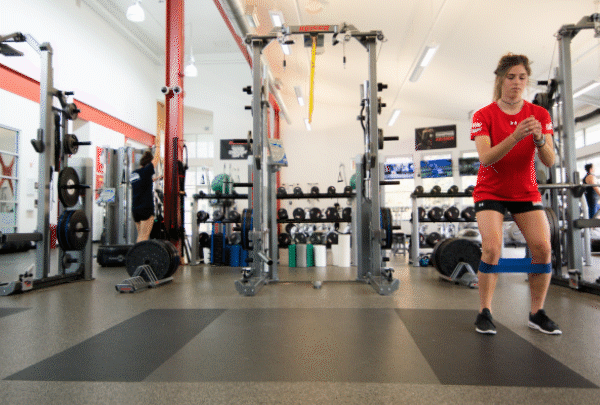
Directions: Place resistance band around both legs just below the knees. Get into a BASE stance, preferably facing a mirror for feedback. Take a large step laterally, then follow with a small step with the trailing leg. Repeat for 6-10 steps in one direction then repeat in the opposite direction to work your other leg as the leading foot.
Seated Leg Extensions
- Targets: Quads
- Benefit for skiing: Strengthens your quads to be able to ski varying terrain and snow conditions; protects the ligaments around the knee joint
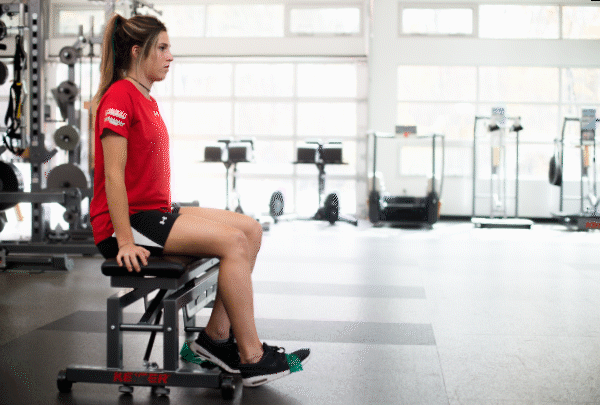
Directions: From a seated position with your hips forward on the edge of a bench or box, step on the band with one foot and place the other end of the band around the ball of the opposite foot. Extend the lower leg up and away, pushing the heel toward in front of you. You should feel and see the quad activate when you extend the leg forward.
AT Raises
- Targets: Anterior tibialis (shin muscle)
- Benefit for skiing: The anterior tibialis is the muscle responsible for flexing your foot, a critical movement in skiing as this movement helps you flex forward into an athletic stance and absorb rough or uneven terrain; strengthening the AT will also help combat shin splints, a.k.a. shin bang.
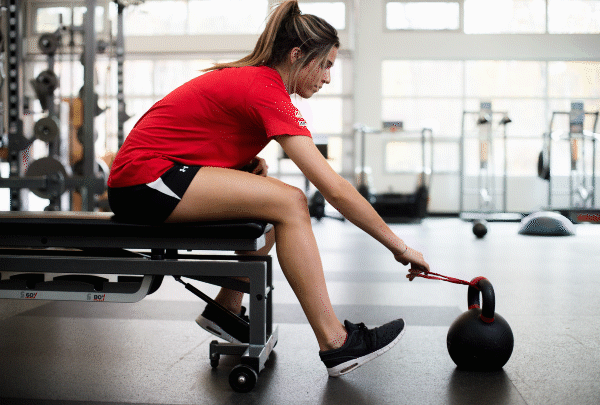
Directions: Connect a band to a stable point and put the other end around your forefoot while in a seated position. Elevate the leg about one inch off the floor and pull your toes back towards your shin. You should feel this in the front of your shin.
Lateral and Medial Extensions
- Targets: Adductors and abductors of the thigh
- Benefit for skiing: Strengthens muscles responsible for edging control in skiing
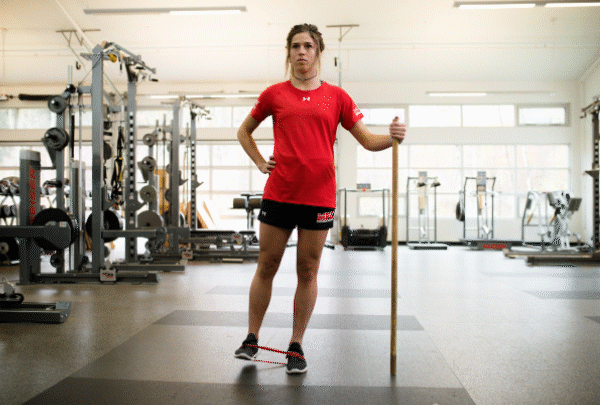
Directions: Place the band or cable loop around the side of the foot. Sweep the foot across the body laterally for the medial extension. Pull the foot and leg away from the center line of the body for the lateral extension.
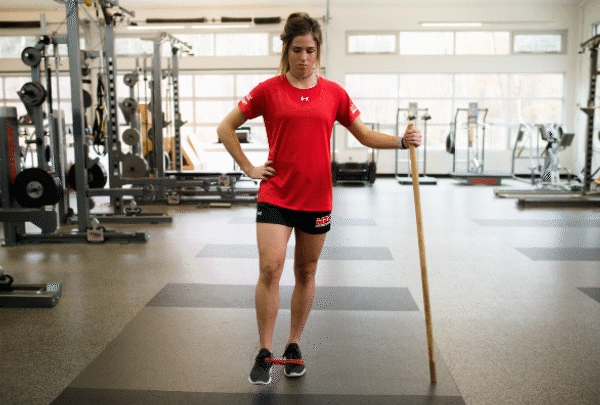
These easy exercises are a great intro to working out with resistance bands, and especially great for pre-season fitness training as they work muscles critical in preventing common ski-related injuries. But the sky’s the limit when it comes to working out with resistance bands, and you can even add bands to traditional free weight exercises to add more resistance to your lifts and build even more strength.
Learn more helpful ways to get ready for the ski season via a comprehensive 8-week training plan to prevent injury and gain strength by registering for AIM AdventureU and SKI Magazine’s Ski Injury Prevention course.
For more ski fitness ideas and motivation, check out SKIMag.com’s fitness channel.
